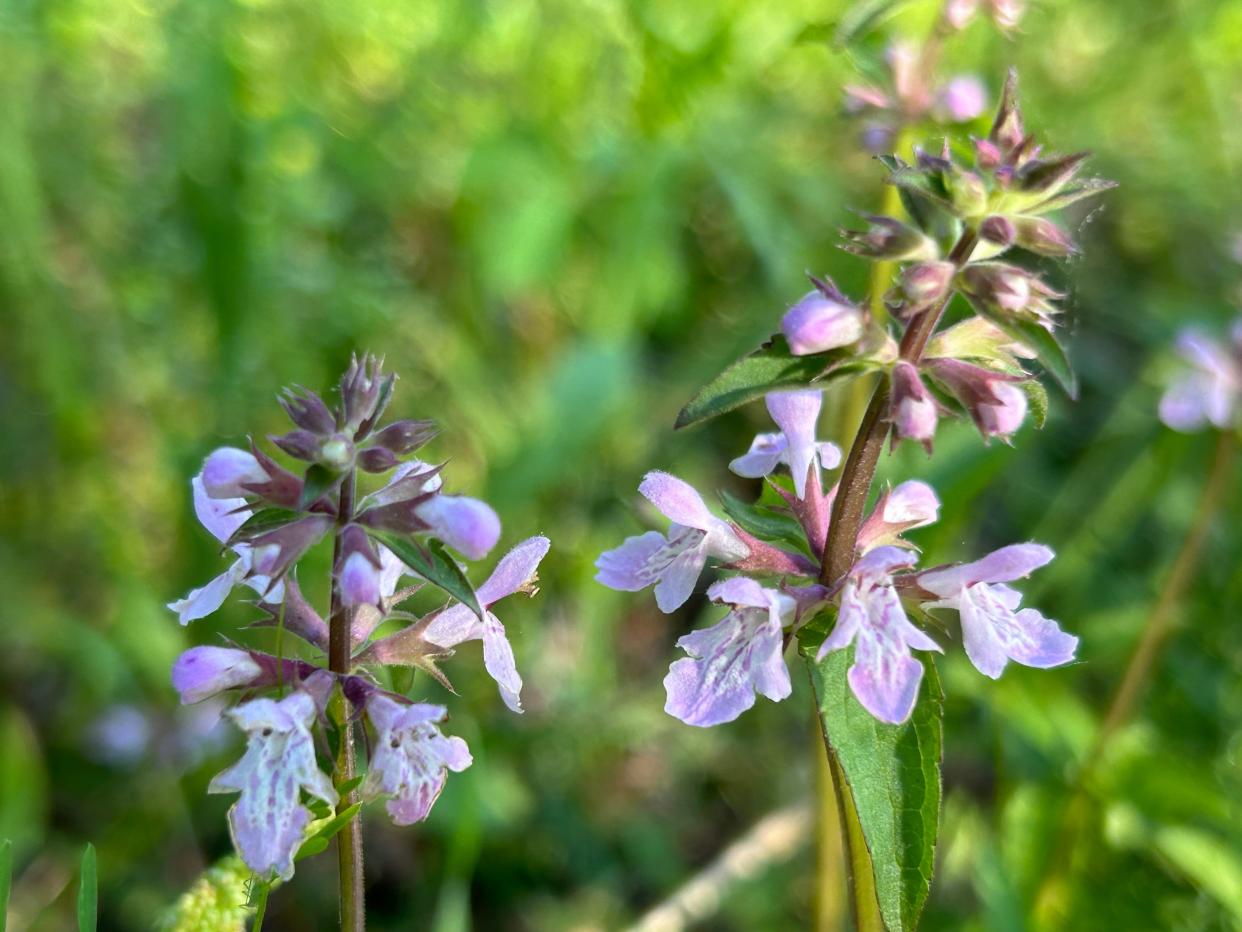This Florida native was first recorded in Tallahassee area | Mystery Plant
How could anyone not love this lovely little plant?
Its graceful stems are adorned with beautifully scalloped, bright green leaves. Rub the foliage and sniff: you’ll detect a charmingly spicy “earth odor.” Its little stems are perfectly square in cross section — so fun to feel.

And its flowers! Each calyx is a miniature star-shaped chalice, the five points stretching out. The corolla is like a miniature orchid, a pale ivory pink, with plenty of darker purplish speckles, seducing the bumbling honeybees to follow the trail inside, where delicious nectar awaits.
This little plant (Florida Betony, Rattlesnake weed, Stachys floridana) is a member of the mint family (Lamiaceae). It’s a perennial species, which of course means that it can come back season after season from underground parts that it produces. In this case, the underground parts are swollen, somewhat crisp, white, cylindrical tubers that are produced at the ends of its slender rhizomes.
Flowering commences in April where I live (actually I’ve seen the plants blooming a few times as early as late March), and of course flowering may be later as you move north. The oldest flowers on a stem will be toward the bottom, with the newest ones up top. If all goes well, each flower will produce 4 small, dark fruits — one seed inside each.
Flowering tends to deplete the little tubers, and so the plants will begin producing a new crop of them later on. Did I tell you that these tubers are edible? Well, they sure are. (Really!) Very tasty I think, and perfectly suitable for salads. Just get all the sand off.
This species is apparently and originally native only to Florida: the first known herbarium collections are from the Tallahassee area, back in the 1800s.
Because of its tubers, it was able to be transported — easily — from one place to another. After the 1940s, this plant has exploded onto the Southeastern scene as a serious garden weed, and I have theorized for some time now this is largely due to inadvertent transport from Florida, stowing themselves away in shipments of container plants.
Once the tubers establish themselves, the plants behave like “winter annuals”, coming up as vegetative growth when autumn starts, and lasting through winter’s chill. Then they bloom in the spring. This species has become a real nuisance in Southern gardens, and many people despise it, despite all the good things I’ve mentioned about it at the beginning of this essay.
Unfortunately, merely pulling or digging the plants up does little to stop its spread, due to those tubers (and the rhizomes), which often fragment during this failed removal process. Makes the situation worse. I expect that only extreme diligence in digging/pulling would take care of an infestation, but who wants to put in all that work?
Sure enough, there seem to be effective herbicides that will knock out this plant, but they are very powerful, and potentially toxic to plenty of friendly garden things. If you MUST use an herbicide, please consult your friendly local Extension Office — and follow their directions!
John Nelson is the retired curator of the Herbarium at the University of South Carolina, in the Department of Biological Sciences. As a public service, the Herbarium offers free plant identifications. For more information, call 803-777-8175 or email johnbnelson@sc.rr.com.
This article originally appeared on Tallahassee Democrat: Florida Betony was first noted in the Tallahassee area in 1800s
